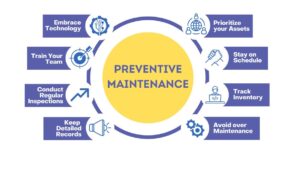While modern transportation and operations are busy, a wide range of events happen on our streets and job sites. A mixed fleet is a group of vehicles that operate together, despite their different types, sizes, and uses.
But why do we need such an unique group of vehicles? The answer lies in the fact that businesses and groups today have a lot of different needs. We need heavy-duty equipment a building company to move mountains of dirt. Courier services need quick vans to get around cities. Rapid reaction vehicles are important for emergency service. The government needs a wide range of them for different public services. A mixed fleet, consists of a variety of vehicles to meet such specific demands.
As you start to manage a mixed fleet, you will face some obstacles, but the end goal is full of rewards. The benefits are as varied as the fleet itself. They range from better safety and sustainability to higher working efficiency and cost control. Join us on this journey as we look at the problems, how to fix them, and the way to a more productive and efficient mixed fleet operation in this piece.

A. Diverse Vehicle Types and Their Unique Challenges
1. Understanding the Mix
- Mixed fleets often consist of cars, trucks, vans, specialized vehicles, and equipment. Each type has unique maintenance, regulatory, and operational requirements.
2. Maintenance Challenges
- Different vehicles need distinct maintenance schedules, parts, and expertise.
- Neglecting maintenance can lead to costly breakdowns and safety hazards.
3. Regulatory Compliance
- Different vehicles are subject to different regulations, from emissions standards to weight restrictions.
- Non-compliance can result in fines and legal consequences.
B. Efficient Fleet Management Strategies
1. Fleet Management Software
- Invest in a robust fleet management software solution that can centralize data on all vehicles. This helps track maintenance schedules, fuel consumption, and driver behavior.
2. Standardized Maintenance Practices
- Create a standardized maintenance protocol that accommodates different vehicle types.
- Schedule routine inspections and preventive maintenance to prevent breakdowns.
3. Driver Training
- Train the drivers to operate different types of vehicles safely and efficiently.
- Promote fuel-efficient driving habits to cut down on operational costs.
4. Regulatory Compliance
- Stay informed about regulations relevant to your mixed fleet.
- Install a compliance management system to ensure adherence.

C. Cost Control
1. Fuel Efficiency
- Put in place fuel-efficient driving practices to reduce fuel consumption.
- Consider hybrid or electric vehicles for part of your fleet.
2. Data Analysis
- Regularly analyze data from your fleet management software to identify cost-saving opportunities.
- Track fuel consumption, vehicle usage, and maintenance costs.
3. Right-Sizing Your Fleet
- Check whether you have the right number and types of vehicles in your fleet.
- Drop underutilized or redundant vehicles to reduce operational costs.
D. Safety and Risk Management
1. Telematics and GPS Tracking
- Use telematics and GPS tracking to track driver behavior and ensure compliance with safety guidelines.
2. Accident Prevention
- Train your drivers on safe practices and provide safety equipment as needed.
- Implement regular safety checks and inspections to identify and rectify potential issues.
E. Sustainable Practices
1. Emission Reduction
- Transition to cleaner, more fuel-efficient vehicles to reduce your fleet’s environmental impact.
- Explore the use of alternative fuels and hybrid/electric options.
2. Vehicle Cycling
- Put in place a vehicle cycling strategy to retire older, less efficient vehicles from your fleet.

It can be hard to keep up with maintenance, regulations, costs, safety, and the environment when you’re in charge of a mixed fleet. We can solve these problems putting in place effective fleet management plans. Also, by spending money on technology, and making training and following the rules. To make sure the fleet works at its best, we should look at data on a daily basis. Managing a mixed fleet well is important for the growth and success of the business.
The solutions and tips provided in this article are the keys to unlocking the potential of a mixed fleet. So, what steps will you take to enhance your fleet management practices? Let TransportSimple help you take the first step towards efficiency. Your organization’s success depends on it.






Leave a Reply